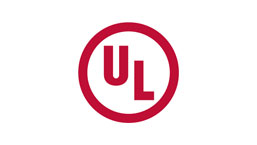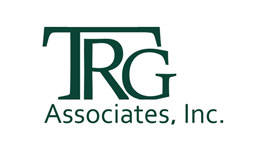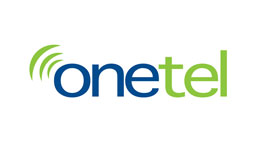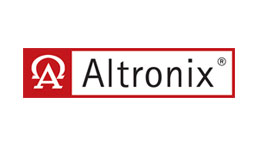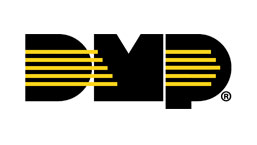A. Form an Emergency Response Planning (Strategic) Team:
1. Upper Management – Vice President level with unquestioned authority to approve expenditures during an emergency situation, both in personnel and property.
2. Line/Oprations Management – Mid management familiar with the operation of the business and the personnel involved.
3. Information Systems – Lead Technician/Specialist familiar with the IT portion of the business. Able to interface with the software provider and their technical staff during an emergency, as well as the hardware provider and their staff.
4. Human Resources – Ideally the manager of HR who is familiar with the company policies as well as state and federal laws pertaining to labor laws, Code of Conduct and grief counseling.
5. Engineering – Depending on the size of the company, this role may be combined with the Information Systems and Maintenance function. Must be familiar with the operation of the emergency power supply (UPS) and generator functions. This should be a member of the engineering management team or at the least, the lead engineer.
6. Maintenance – Mainenance manager/supervisor with intimate knowledge of the building functions and contractors that may need to be contacted in an emergency.
7. Public Relations – PR manager that will act as the “face” of the company during an emergency. All media contact must be directed to this individual. They must have a clear line of communication to the upper management and HR manager.
8. Security – Individual with authority to direct staff to a safe environment while securing the company resources from loss during an emergency situation.
9. Sales – Sales Manager with knowledge of product resources, suppliers, transportation lines and customer data base. Individual must keep in constant contact with the upper management, public relations and operation manager in order to continue to sell services that keep the flow of resources for the company. If there is to be a break in service, this individual must be in the loop in order to keep the sales force informed.
10. Legal – Company attorney must be accessable to the upper management and HR manager for legal references.
11. Finance – Accounting manager with authority to okay emergency payments for services. Must keep a close eye on expenditures that may come from different sources during an emergency situation.
12. Transportation – Supervisor responsible for the company fleet in the event a decision to mobilize the company resources is ordered. Responsible for the upkeep and complete stocking of all vehicles. Must be aware of source of fuel and necessary products in the event of an area wide emergency that might limit resources.
13. Contractors – To be handled by the Operations Manager and his/her designee. A list of all contractors that are regularly found in the facility and their company contacts must be available. This individual is responsible for insuring that all contractors are familiar with the company emergency plans.
14. Motor Pool – See #12 above.
15. Environmental Safety & Health – Manager responsible for the company’s safety procedures, manual updates, emergency contacts and all MSDS’s (Material Safety Data Sheets).
16. Risk Management – Manager familiar with the company’s insurance carrier and policy limits. Must work closely with the Operation Manager on all procedures.
B. Form an Emergency Response (Tactical) Team:
1. First Responders – Safety/Security Specialists trained to interface with AHJ and emergency services personnel.Must have ability to prioratize situation and authority to direct personnel to proper response.
2. Company Team Captain – First line supervisor with ability to control the environmnet. This individual should receiveformal training from professional organizations such as the National Incident Management System or Incident Command Training by FEMA.
3. Telecommunications Contact – Individual(s) with technical expertise in the telecommunication component of the central station and contacts with the various carriers that service the office. If possible, should also have IT expertise.
C. Identify Potential Disasters/Vulnerabilities – Types of Disasters
1. Natural Disasters:
- a. Hurricanes
- (1) Resources: www.colorado.edu/hazards/resources/web/hurricanes.html
- b. Earthquakes
- (1) Resources: www.colorado.edu/hazards/resources/web/earthquakes.html
- c. Tornados
- (1) Resources: www.colorado.edu/hazards/resources/web/tornadoes.html
- d. Floods
- (1) Resources: www.colorado.edu/hazards/resources/web/floods.html
- (2) FEMA: http://www.fema.gov/business/guide/section3c.shtm
- e. Tsunami
- (1) Resources: www.colorado.edu/hazards/resources/web/tsunamis.html
- f. Wind Storms
- g. Electrical Storms
- (1) Resources: www.colorado.edu/hazards/resources/web/weather.html
- h. Snow/Ice Winter Storms
- http://www.fema.gov/business/guide/section3f.shtm
- i. Landslides/Avalanches
- (1) Resources: www.colorado.edu/hazards/resources/web/landslides_avalanches.html
- j. Volcanoes
- (1) Resources: www.colorado.edu/hazards/resources/web/volcanoes.html
- k. Wildfires
- (1) Resources: http://www.colorado.edu/hazards/resources/web/wildfire.html
- NOAA’s Fire Prediction Center
2. Man-made Disasters:
- a. Terrorism
- Guidance for Filtration and Air-Cleaning Systems to Protect Building Environments from Airborne Chemical, Biological, or Radiological Attacks
- b. Fire
- c. Burglary
- d. Strikes
- e. Riots/Other Civil Disturbances
- f. Bomb Threat
- What information to record: http://getprepared.ca/knw/ris/bmb-eng.aspx
- g. Sabotage/Vandalism
- h. Workplace Violence
3. Other Disasters:
- a. Power Failures
- b. Heating/cooling system Failures
- c. Telephone/Telecomm System Failures
- d. Computer System Failures
- e. Building Collapse
- f. Gas Explosions
- g. Chemical Spill/Hazardous Materials Spill
- NIOSH Pocket Guide to Chemical Hazards
- Agency for Toxic Substances and Disease Registry
- h. Pandemics
- a. Resources: www.colorado.edu/hazards/resources/web/med.html
- b. West Nile Virus: CDC Information
D. Vulnerability Assessment
1. Prioritization, Frequency, Probability and Severity of Vulnerabilities:
Section C provides for a long list of vulnerabilities. Every physical location is subject to these vulnerabilities to some degree ranging from highly unlikely through virtual certainty. Examination of each of these with a mind towards weighting each by probability, frequency, and severity will lead you towards prioritizing each element of risk.
Prioritizing these vulnerabilities is not only an exercise to create organization awareness of your risks but also to properly align and focus resources to mitigate those vulnerabilities through fault-tolerance and to guide the recovery process in the when a loss overwhelms fault-tolerance.
As an example, your central station is located within an 1/8th of a mile from a chemical plant. If that plant experiences a spill or fire it would force the evacuation of the area with ½ mile of the plant. It may have never happened but doesn’t mean that it will not. The severity is high as it will effectively force the loss of your location for 24 to 72 hours. Since no amount of on-site fault-tolerance will suffice, the focus of the recovery efforts here are in rapid relocation of your operation and personnel outside of the affected area.
A number of other events may also include a severity level that includes the loss of the facility for short to moderate periods of time as well. The more vulnerabilities that include loss of the facility increases the probability and frequency of such a loss. If, during your assessment, the likelihood of a facility loss may ratchet up the priority list and land somewhere near the top. It will likely compete with other serious risk outcomes but having your vulnerabilities sorted out and prioritized in a rational fashion will allow you to begin focusing your resources and planning around the prioritizations.
E. Identify Necessary Actions & Resources
1. Identification of Essential Personnel to Notify
2. Identification of Critical Products
- a. Suppliers List
3. Identification of Internal Resources
4. Identification of External Resources
- a. Police
- b. Fire Services
- c. Municipal Government/Agencies
- d. State Agencies
- e. National Agencies
- f. Utility Companies
- g. Vendors
- h. Insurance Companies
- (1) Catastrophy-related Insurance Resources: www.colorado.edu/hazards/resources/web/insurance.html


